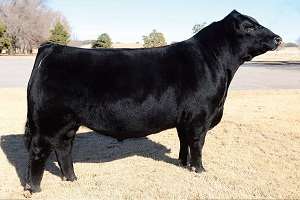By Ron Hays
As one of the largest seedstock operations in the business, most would agree Express Ranches has hit the height of success. Radio Oklahoma Ag Network Farm Director Ron Hays spoke recently with the ranch’s president and CEO, Jarold Callahan, recently who shared some of the operation’s secrets of success. According to Callahan, it’s mostly just good genetics and a lot of hard work.

“We spend a lot of money, spend a lot of effort to try to get our cattle as good as they can be,” Callahan said. “We’re attempting to raise real good bulls - that go out and breeds the commercial man’s cows and doesn’t cause him any problems; and adds value to his calves.”
And unlike in the past, when a good bull was judged more or less on his looks, Express today, has the full advantage of mountains of data that tell a bull’s full story. This helps the managers at Express, help their customers find the perfect bull for their needs.
“We have a lot more information,” Callahan agreed. “At times it probably can overwhelm you, but I think the economically important traits are the ones that we want to dwell on.”
Click here to see more...